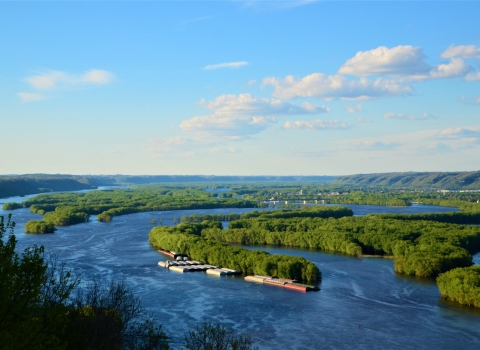The public can now view and comment on the U.S. Fish and Wildlife Service’s draft recovery plan for the endangered slabside pearlymussel, a freshwater mussel which helps protect water quality by filtering out pollutants, algae, and harmful bacteria.
The slabside pearlymussel, found only in the Tennessee River system in Tennessee, Alabama, Mississippi, and Virginia, is at risk of extinction. Once located in Tennessee, Alabama, Mississippi, Kentucky, and Virginia portions of the Cumberland and Tennessee River systems, slabside pearlymussel has disappeared from the Cumberland River system and the state of Kentucky. It historically occupied around 1,970 river miles of stream across its range, but less than 40 percent of this habitat is currently occupied. Its draft recovery plan is now available for public review at:
https://www.fws.gov/program/recovery/recovery-plans
The slabside pearlymussel was listed as endangered with 970 river miles of critical habitat under the Endangered Species Act in September 2013. It has a smooth, subtriangular shell, and its solid, heavy valves are moderately inflated. Its greenish-yellow shell turns brownish with age, and its inside is usually white, but is sometimes straw-colored. The pearlymussel reaches 3.5 inches in length, and its lifespan is estimated to exceed 40 years. It exists in shoal habitats in large creeks or rivers with sand, fine gravel, or cobble substrates and moderate currents. The slabside pearlymussel’s habitat is declining or disappearing because of impoundments, gravel and coal mining, sedimentation, water pollution, and stream channel alterations.
Recovery plans are based on the best available science and are crucial for coordinating efforts and resources toward conserving endangered or threatened species, providing hope for these species’ future. The slabside pearlymussel’s recovery plan outlines the criteria for delisting it, along with necessary site-specific actions and their estimated time and costs. The recovery plan also focuses on recovery actions such as habitat restoration and population monitoring.
Public participation informs recovery plans and can help ensure they are effective and successful. The Service seeks any information that enhances the understanding of the (1) species’ biology and threats and (2) recovery needs and related implementation issues or concerns.
For more information on the slabside pearlymussel, visit the Species Profile below:
https://www.fws.gov/species/slabside-pearly-mussel-pleuronaia-dolabelloides
The mission of the U.S. Fish and Wildlife Service is working with others to conserve, protect, and enhance fish, wildlife, plants, and their habitats for the continuing benefit of the American people. For more information on our work and the people who make it happen, visit https://www.fws.gov/program/southeast-region. Connect with us on social media: Facebook, X, Flickr, and YouTube.



